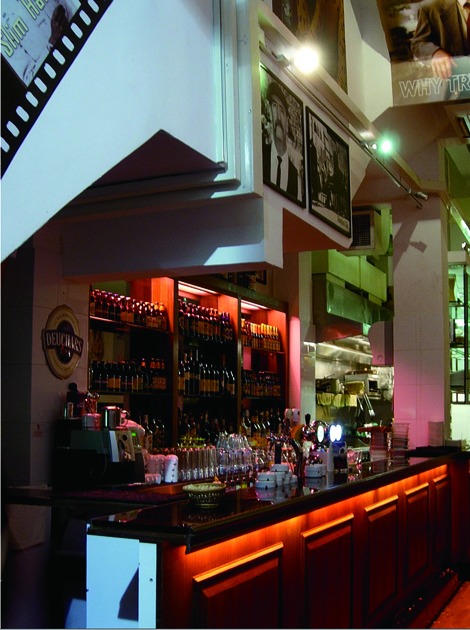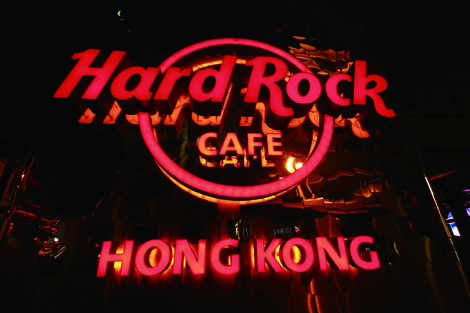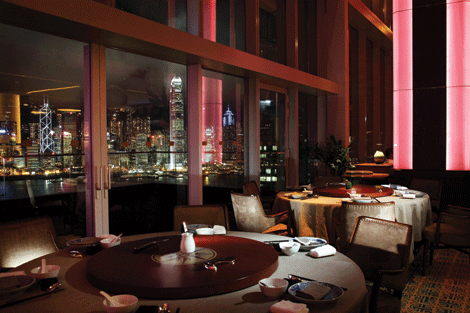Reggie Ho takes a foodie tour of Hong Kong’s thriving districts using its expanded metro system
Almost everyone who has travelled frequently to Hong Kong would agree that its MTR network is one of the best underground train systems in the world. It is clean, safe and efficient, and from the moment you leave the airport, you are never more than 30 minutes from any major district. During peak hours, when street-level traffic comes to a halt, the MTR is a much faster – if crowded – way to get around, with fares ranging from HK$4 (US$0.5) to HK$24 (US$3).
The MTR used to cover only the urban areas, with the Kowloon-Canton Railway serving the relatively underdeveloped regions of the New Territories. But in 2007, the two systems merged to become one network connecting Hong Kong Island with the densely populated Kowloon Peninsula and satellite towns farther north.
A decade earlier, the Tung Chung line was launched along with the Airport Express when Hong Kong International Airport opened near Tung Chung on Lantau, Hong Kong’s largest outlying island. The MTR now encompasses some 170km of track and more than 80 stations.
That means the latest restaurants, bars and shops are only ever a hop, skip and a train ride away – and with the last trains leaving key stations shortly before 1am, you needn’t worry about lingering over a drink. Here we take a look at what’s new in some of the neighbourhoods easily accessible by MTR.
Jervois Street/Mercer Street
Station Sheung Wan, Exit A2
Sheung Wan is to the west and one train stop away from Hong Kong’s premier business hub Central District, and you can also easily walk between the two, but they have a very distinctly different feel. In the 19th century, the British colonists built mostly east of Pottinger Street and Chinese businesses congregated to the west. That has resulted in a sense of divide that can still be felt today. This district is being gentrified but you can still see a lot of old-style shops around selling clay soup pots, Chinese herbs and preserved marine products such as dried seahorse, abalone and fish maw – many on display at the door. In fact, the government has been promoting this area as the Chinese medicine district.
But this is also a great district for pan-Asian dining, with some of the options even famous citywide. One of them is Sang Kee Congee Shop (7-9 Burd Street; tel +852 2541 1099). You find this place by turning right after exiting the station and taking a left turn onto Hillier Street, which continues on your right at the intersection with Mercer Street and Bonham Strand. Turn left on Burd Street and you will come to a cul-de-sac where Sang Kee is located. There is no English signage but it is the only eatery here. The restaurant has since expanded to include a few other outlets on Hillier that serve beef brisket noodles and Yunnan-style vermicelli, as well as a branch in Quarry Bay, on the east side of Hong Kong Island.
If at the intersection you turn left onto Mercer instead, you will find two Malaysian/Singaporean restaurants – Katong Laksa and Prawn Mee (number 8; tel +852 2543 4008) and Malaymama (Shop 11A; tel +852 2542 4111) – both have loyal clientele. There is also Indian eatery Masala (number 10; tel +852 2581 9777) – with salmon head in curry being one of the bestsellers – and “Sam Sing” (meaning “Three Stars”; number 1-3; tel +852 2866 6699), specialising in Taiwanese noodles. This place does not have an English name but you can recognise it from the three red stars on the signboard. You get to choose your soup base here for the noodles but make sure that you have a lot of tissues ready when ordering the Sichuan-style recipe – it’s so hot you will be breaking out in a sweat.
At the end of the block you will find Jervois Street, where you find gay bar Zoo (number 33; tel +852 3583 1200; www.zoobar.com.hk). Turn right and pass the Hillier intersection and you’ll find a shop with a giant sign with carved gold Chinese characters – Po Lin Yuen (number 69; tel +852 2543 8981), a Buddhist vegetarian restaurant that has for decades been packed with customers loving their meat-inspired vegetarian dishes such as “crispy duck” made of deep-fried tofu skin and mushroom and “fish” carved out of taro.
Or combine the visit to a heritage building with some great dim sum by turning right onto Morrison Street at the end of Jervois. You will see an Edwardian red-brick building that was once the Western Market. Now it houses a fabric market on the first floor and The Grand Stage (2/F, Western Market, 323 Des Voeux Road Central, +852 2815 2311) restaurant on the second. This venue is famous for dim sum, nostalgic Chinese dishes and ballroom dancing nightly at 7-11pm, except when there is a private function.
Finally, walk back in the other direction on Morrison and turn right on Queen’s Road West and you will find a cluster of long-time Chiu Chow restaurants that once served the vibrant Chiu Chow business community in the area; they include Chan Kan Kee (number 11; tel +852 2858 0033), famous for its marinated goose and baby oyster congee in a broth flavoured with pork and dried flounder.
Star Street
Station Admiralty, Exit F
Before the turn of the millennium, Star Street, although a mere five minutes’ walk from upmarket commercial complex Pacific Place and 20 minutes from Central, was a district of old residential blocks that saw very little action. But when local developer Swire Properties swooped in, the area was transformed.
Today, Star Street has grown into an entertainment district that incorporates several blocks, including Sun and Moon streets, with art galleries, shops and some two dozen eateries. Among them, Cépage (23 Wing Fung Street; tel +852 2861 3130) boasts one of the region’s largest collections of French wine, while 1/5 Nuevo (9 Star Street; tel +852 2529 2300) attracts hordes of drinkers every night with its fine cocktails and contemporary tapas. Patrons spill out onto the street, creating a vibrant party atmosphere.
Diagonally across the street is a branch of Classified (31 Wing Fung Street; tel +852 2528 3454; www.classifiedfoodshops.com.hk), a local café-cum-gourmet food chain that began in 2006 and now boasts seven outlets, all of which enjoy prime locations and are frequently packed out. Head farther down Wing Fung and right before Queen’s Road East you’ll find Xi Yan Sweets (number 8; tel +852 2833 6299; www.xiyan.com.hk), an offshoot of Xi Yan private kitchen that, unlike the flagship, does not require a reservation and serves a selection of the group’s signature East-meets-West dishes in a more casual setting. Right across the street is burger-and-beer joint Slim’s (number 1; tel +852 2528 1661; www.elgrande.com.hk) with its spill-out crowd, forming an interesting juxtaposition.
Partygoers once had to either take a taxi or trek up from Queen’s Road East to reach Star Street, but an underground tunnel opened in 2007 to connect the area to Admiralty station. Take Exit F and instead of entering the mall, turn left to enter Three Pacific Place – exit from the main lobby and you’ll be in the thick of the action.

Lan Kwai Fong/Wyndham Street
Station Central, Exit D2
If you’ve been to Hong Kong, chances are you have visited Lan Kwai Fong, but next time you might find much has changed. California Entertainment Building and California Tower, once home to well-known restaurants such as California (immortalised by Wong Kar-Wai’s celluloid classic Chungking Express), are being rebuilt. It was not a decision taken lightly.
“We didn’t want to do it until we saw there was enough of a critical mass, that the area wouldn’t suffer [from the construction work],” says Allan Zeman, founder and chairman of Lan Kwai Fong Holdings, which owns the buildings. Dubbed the “Father of Lan Kwai Fong”, Zeman has been credited with building up this lively district.
In place of the two demolished towers will be one giant 26-storey “lifestyle building” featuring ceilings at least 4.5 metres high. “I want each floor to feel grand, with a feeling of space,” Zeman says. There will be 14 floors of restaurants and bars, with terraces for people to sit outside, as well as a rooftop venue and a yoga centre.
The new building is slated to open at the end of next year but meanwhile, Lan Kwai Fong is expected to keep on partying, especially with the opening of Hard Rock Cafe. After the Canton Road location closed at the end of 2008, a Vietnamese investor came in to open a new one at this lively party hub, with seating for 120, a bigger stage and an outdoor area.
Zeman has also moved two of his popular restaurants from the old towers to another of his venues across the street. Indochine (4/F, the Plaza, 21 D’Aguilar Street; tel +852 2869 7399; www.indochine.com.hk) now features an outdoor terrace, while the classic Vietnamese cuisine remains. Japanese eatery Kyoto Joe (2/F-3/F, 1 Lan Kwai Fong; tel +852 2804 6800; www.kyotojoe.com) is again luring crowds with its wide selection of sushi, beef tataki and wild mushroom soup. New eateries also continue to pop up in the LKF Tower, home to the boutique LKF hotel (www.hotel-lkf.com.hk).
Gold by Harlan Goldstein (Level 2, LKF Tower, 33 Wyndham Street; tel +852 2869 9986) has replaced Scandinavian restaurant FINDS (which has moved to Tsim Sha Tsui) with a modern European menu featuring selections such as King of Hams (Iberian Bellota) and Queen of Hams (Italian), alongside fresh oysters, premium steaks and dishes such as slow-cooked Colorado lamb rib and melt-in-your-mouth Scottish salmon. The outdoor terrace is proving to be a popular draw here.
Meanwhile, the owners of Hong Kong’s most popular gay club, Propaganda, have opened a wine and cocktail lounge called Psychic Jack (1/F, 30-32 Wyndham Street; tel +852 2868 6102) just off Lan Kwai Fong, providing a sophisticated place to hang out in the evening until 3am. Prices are steep but its ultra-slick interior with windows looking out on the historical Fringe Club (which has a lovely rooftop bar serving affordable drinks; www.hkfringe.com.hk) will no doubt still draw crowds.
Wyndham Street, which has in recent years seen its many art galleries and furniture shops replaced by drinking and dining outlets, continues to evolve. Its options range from Crouching Tiger, Hidden Dragon-esque Chinese restaurant Yun Fu (Yu Yuet Lai Building at number 43-55; tel +852 2116 8855) to modest but tasty French bistro Pastis (number 65; tel +852 2537 5702). Take the stairs beside Pastis down to the basement and you will find yourself in Le Boudoir (tel +852 2530 3870), a bar that looks like a secret hangout in Renaissance-era France.
Soho, a few minutes’ walk to the west and consisting mainly of Staunton, Shelley and Elgin streets, is still frequented by foodies.

Tai Hang
Station Tin Hau, Exit B
Like Star Street, Tai Hang, near Hong Kong Island’s busiest retail district of Causeway Bay, is a mostly residential neighbourhood. It has also recently seen an influx of new restaurants, with many of them congregating along Tung Lo Wan Road, off the main traffic artery that is King’s Road. Old noodle joints share the block with sleek additions such as Japanese restaurant Katte Shabushabu (G/F, 134 Tung Lo Wan Road; tel +852 2806 3678), and Rouge (58 Tung Lo Wan Road; tel +852 2881 1901), a café praised for its seafood dishes.
Almost all of these are relatively small, independent operations but the late-2010 opening of a branch of Classified here (G/F, China Tower, 1-9 Lin Fa Kung Street West; tel +852 2857 3454) may signal a turning point for the area. This is the fifth location of the fast-growing chain.
Denise Leicester, director of marketing and sales at the Press Room Group, which owns Classified, says the goal of the company is to encourage “street-level sociability” – a luxury in a crowded city of vertical developments, where visiting malls is a way of life.
“Tai Hang is vibrant and active, yet relaxed,” Leicester says. “The immediate customers [of the new shop] would naturally be Tai Hang residents, but the long-term aim would be to help make the neighbourhood a dining destination.” Like its sister outlets, the new Classified features full-length glass doors that open onto the street, allowing the clientele to soak up the local vibe.
Farther down Tung Lo Wan Road is the heart of Tai Hang. The narrow grid-like streets are full of eccentric eateries, giving the district a bohemian air. They include the den-like coffee-and-cake shop Café Y Taberna (16C King Street; tel +852 2577 7165), and the European-style Café on the Corner (4 King Street; tel +852 2882 7135).
The One/iSquare
Station Tsim Sha Tsui, Exits B1/H, R
Before 1998, the height of new buildings in Tsim Sha Tsui was capped because the old Kai Tak Airport was relatively close by. Now, skyscrapers are springing up everywhere, creating opportunities for restaurant operators with an eye for a good view.
One of the most notable new structures is the 29-storey The ONE (100 Nathan Road; www.the-one.hk), with 13 floors of retail and nine others dedicated to restaurants, including the Sky Dining levels (17-21). Food offerings range from Cantonese and Chiu Chow to sushi and fine steaks, and there is also a drinking establishment called Cocky Bar (L18; tel +852 2724 6388; www.cockybar.com). All these floors feature outdoor terraces overlooking Kowloon and Victoria Harbour, but not every restaurant makes use of them. Two that do are modern Continental eatery Harlan’s (19/F; tel +852 2972 2222) and steakhouse Wooloomooloo Prime (21/F; tel +852 2870 0087).
Another new entertainment hotspot in the area, iSquare (63 Nathan Road; www.isquare.hk), also features restaurants with stunning vistas. Through a marble corridor and past a display of Grand Cru wine, you are led inside Ambrosia Oyster Bar and Grill (Shop 2,802, 28/F; tel +852 2368 6901; www.ambrosia-oysterbar.com), where a 270-degree window offers panoramic vistas. On the top floor is Nanhai No 1 (30/F; tel +852 2487 3688), a Chinese restaurant themed on a merchant ship that sank off the coast of China during the Southern Song Dynasty. This restaurant serves beautifully presented dishes, although the taste can be a little hit-and-miss. The view is, however, spectacular – from here, even the 30-storey Peninsula Hong Kong looks rather small.









